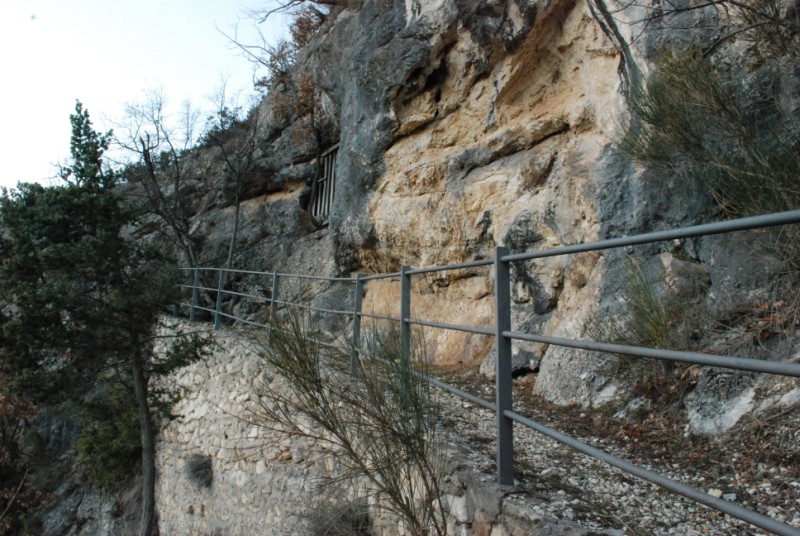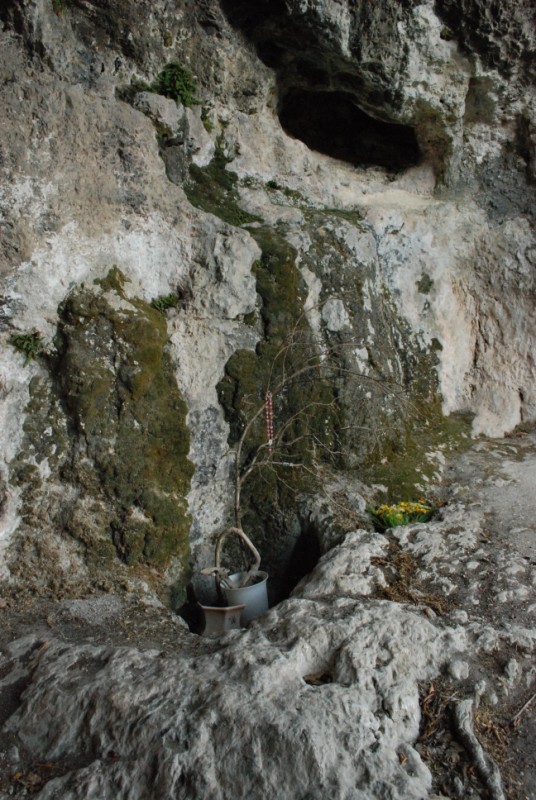The hermit Giolo was born in Sellano around the middle of the 13th century (1250-1315) and led a hermit’s life of prayer and penance in a cave on Mount Giove, near which the oratory of San Lorenzo was built around the 16th century.
In Sellano, the life and miracles of the Blessed Hermit Giolo are known to every elder: the miracle of the embers carried by the saint in his habit, which remained unharmed; the miracle of the fog that descended on the people of Sellano as they prepared to return to the village after recovering Giolo’s body, stolen by the inhabitants of a nearby village; the spring that gushed forth in the cave following the hermit’s prayers. It is also said of an event that occurred not long ago on the Verchiano hill, where the small church of San Salvatore is located: from the only spring in the area, extremely fresh water flowed, which the people drank out of devotion to the Blessed One. The water was later used to water the livestock, and for this purpose, wooden trocchi were built from which the animals drank. Shortly thereafter, the spring dried up and the trocchi remained empty. Once the troughs were removed, the water returned again: this phenomenon has been interpreted as a clear sign of Giolo’s anger, as he wanted the water to be drunk by Christians, not by animals.

Furthermore, on the saint’s feast day, an event also occurs every year, interpreted as a miracle of the hermit of Sellano: when the pilgrims reach the esplanade beneath the saint’s cave, the flies and horseflies that had tormented the pack animals along the way disappear. Giolo’s feast day falls on June 9th, but to allow for greater participation, it has been postponed to the first Sunday following August 10th, the feast of San Lorenzo, to whom the church built to defend the plateau below the cave is dedicated.

The cave of Blessed Giolo opens onto the southern slope of Mount Jugo. It is a natural cavity in the rock face, facing south-southeast. Inside, it measures 3.80 meters long and 2.10 meters wide. A niche, blackened by smoke, has been carved into the back wall, facing the entrance. In the center, lush moss reveals the overflow of water from the rock, perhaps limited to the rainy season. In the small cavities in the wall, several folded sheets of paper were placed, perhaps containing prayers, a cross made from tin foil, and elastic hair clips, and a sign of hope.
Latest posts by Paolo Aramini (see all)
- Giolo the Hermit, the Saint of Sellano - July 15, 2025
- The Arbor Vitae, when art is an invitation to discover Valnerina - July 8, 2025
- Exploring Montefranco in the footsteps of San Bernardino da Siena - June 12, 2025
